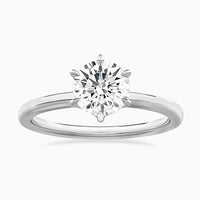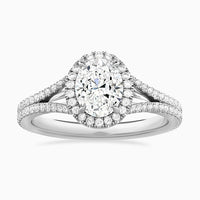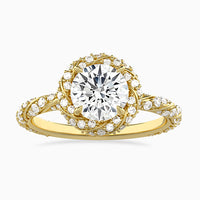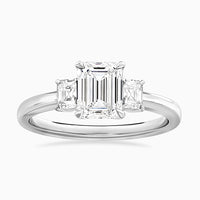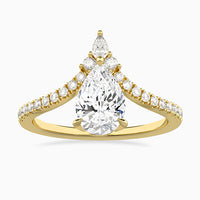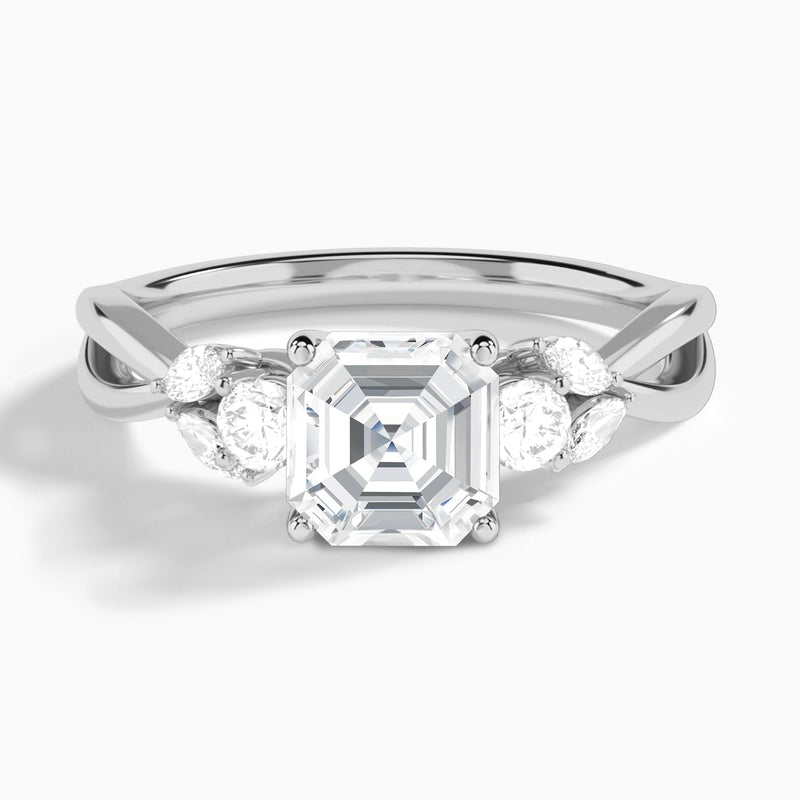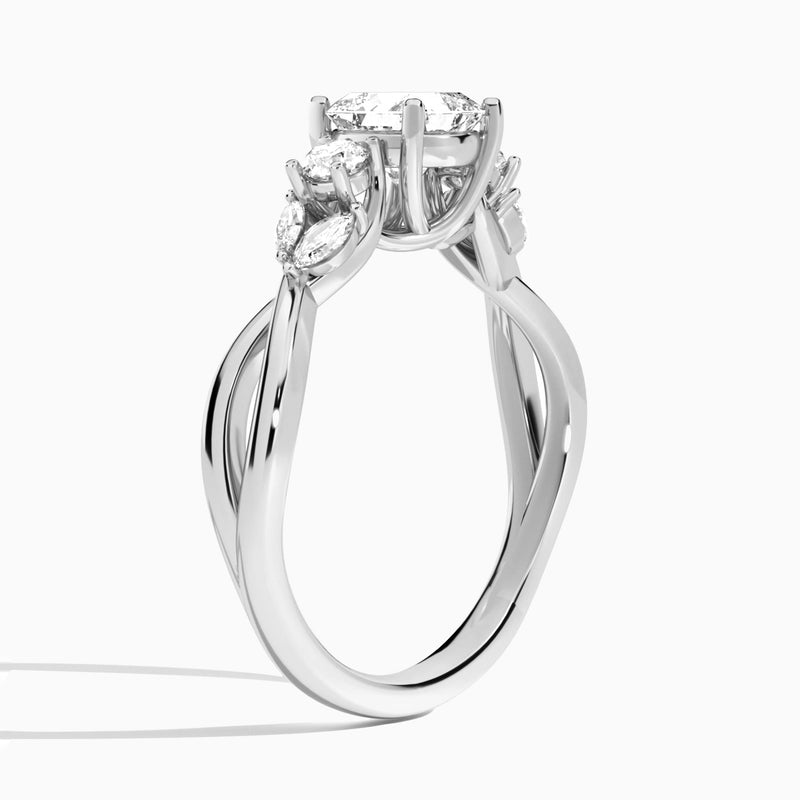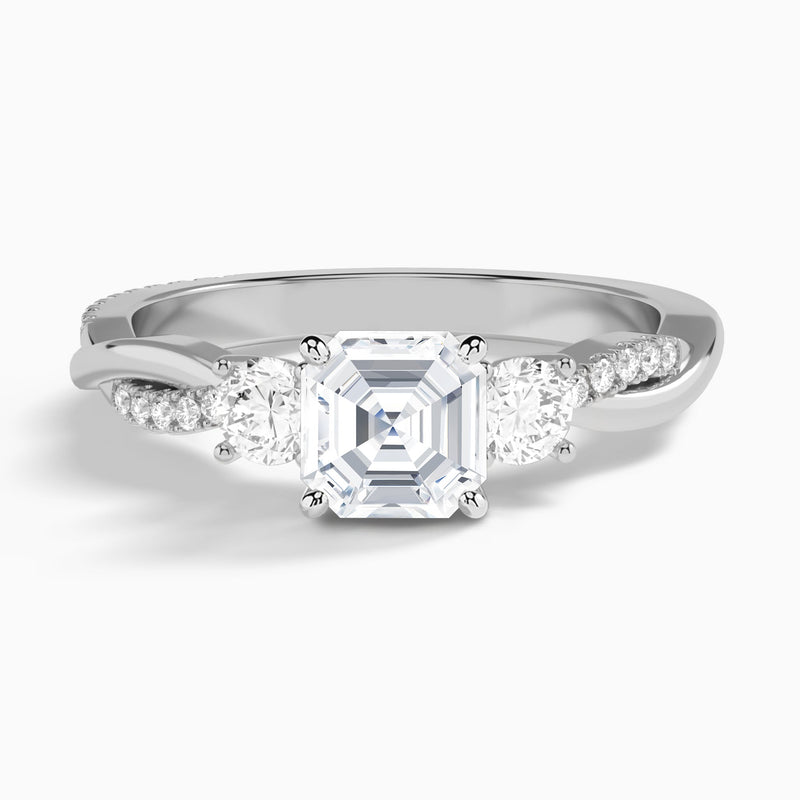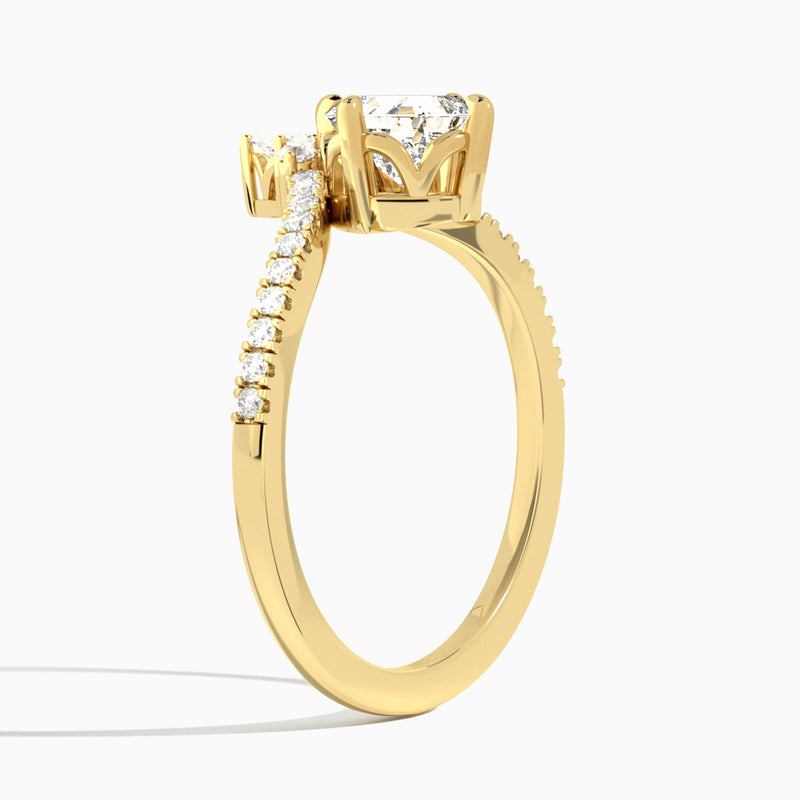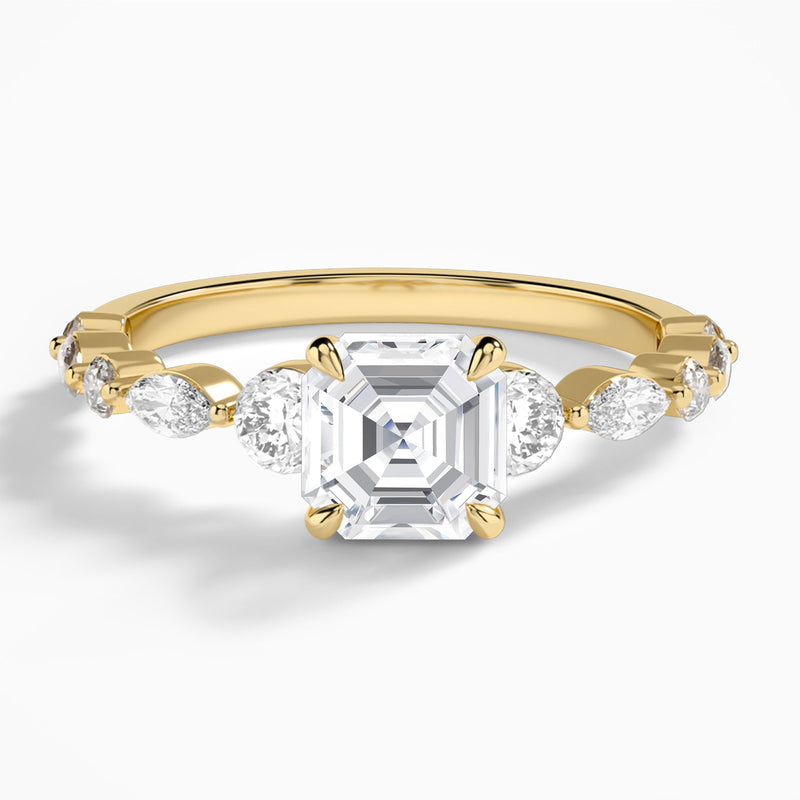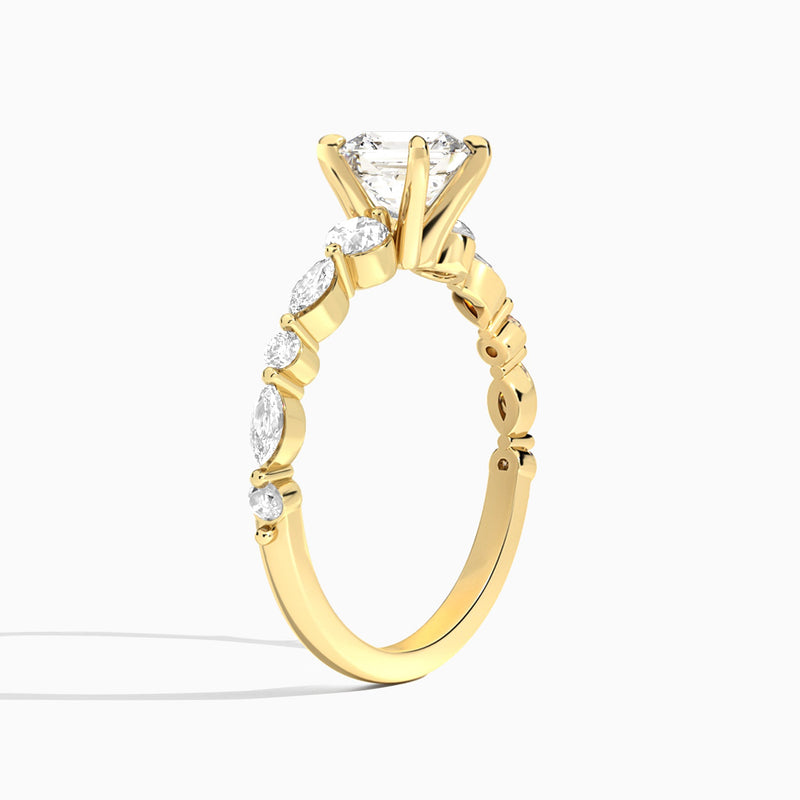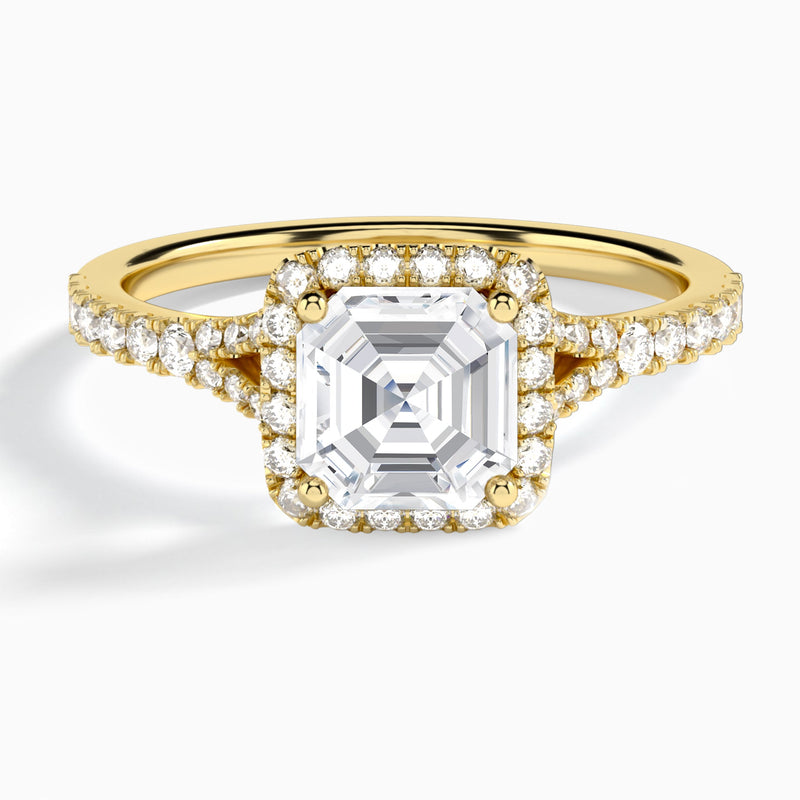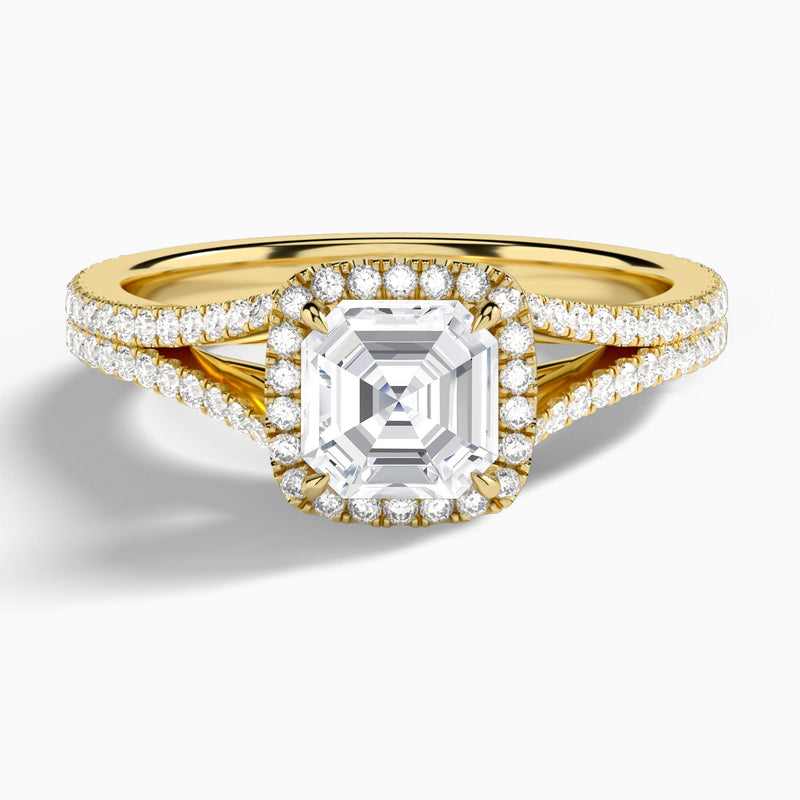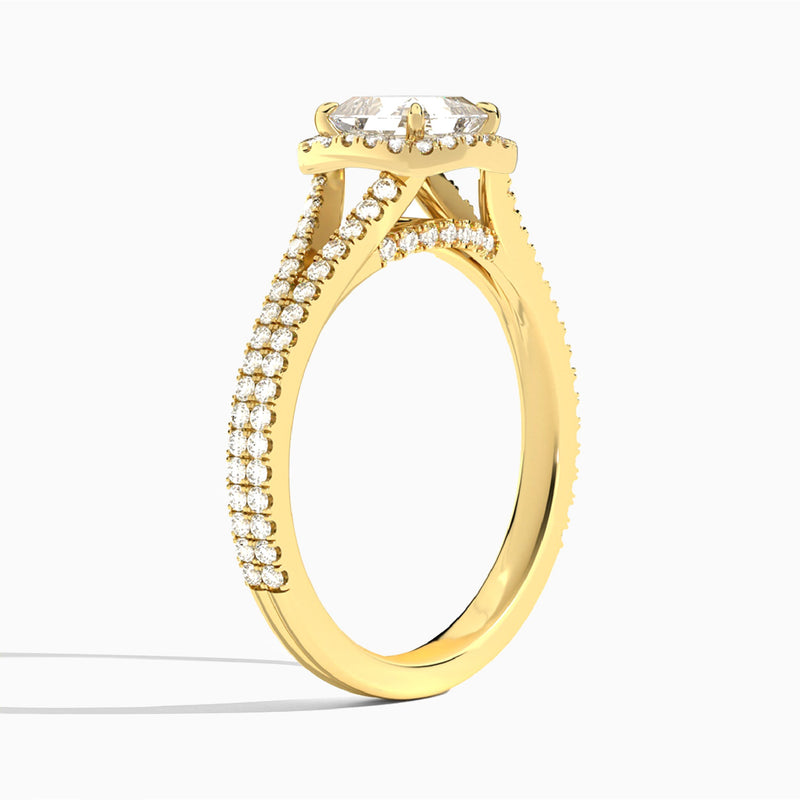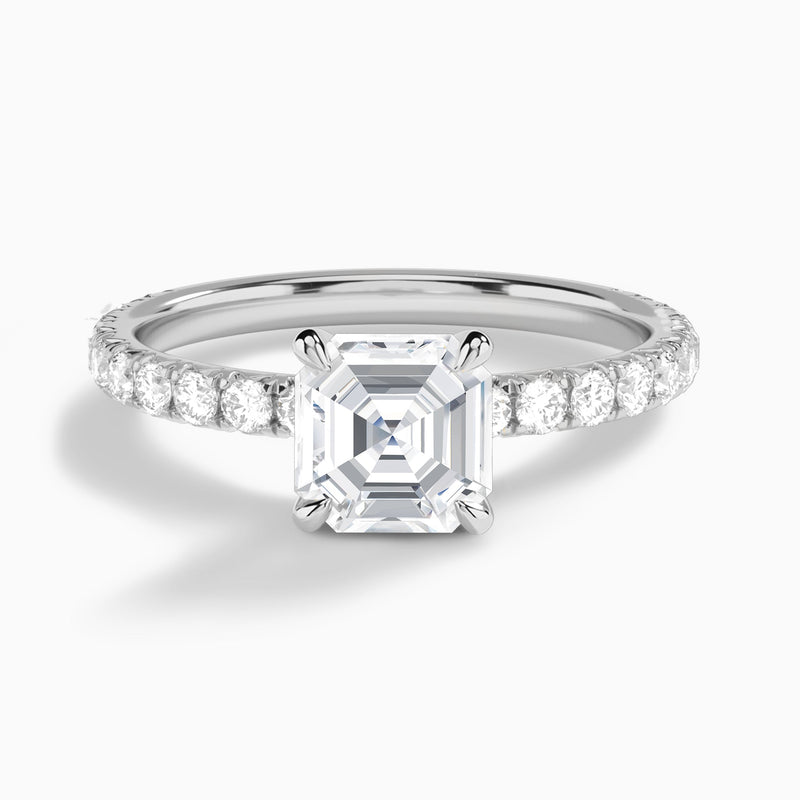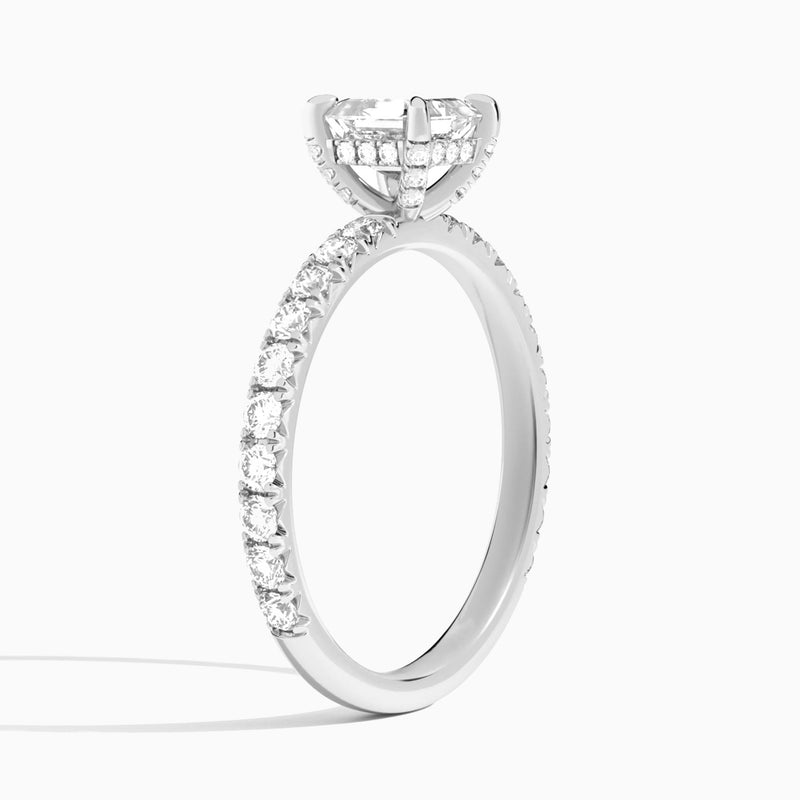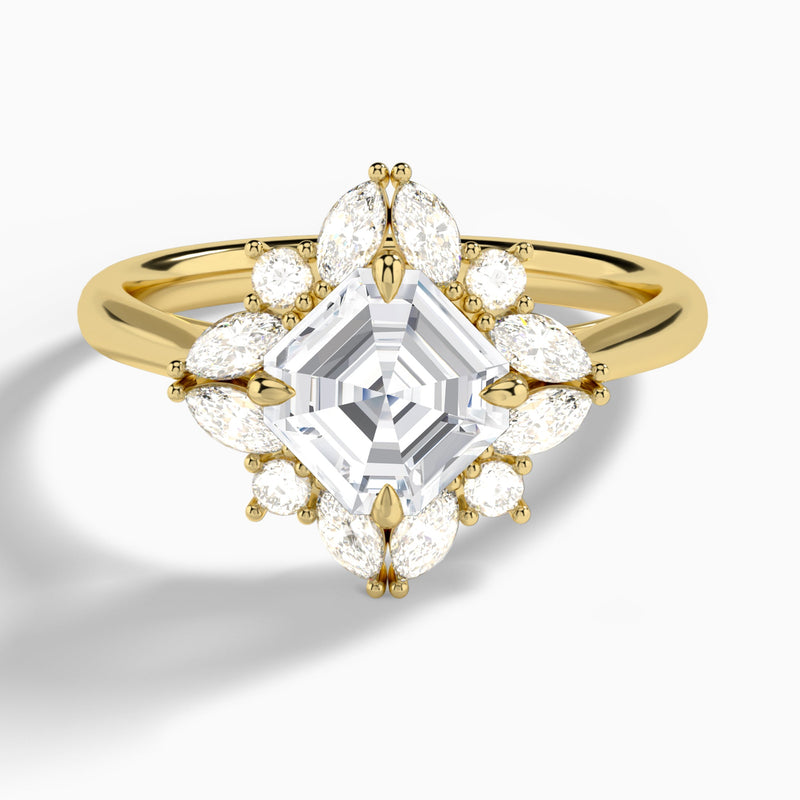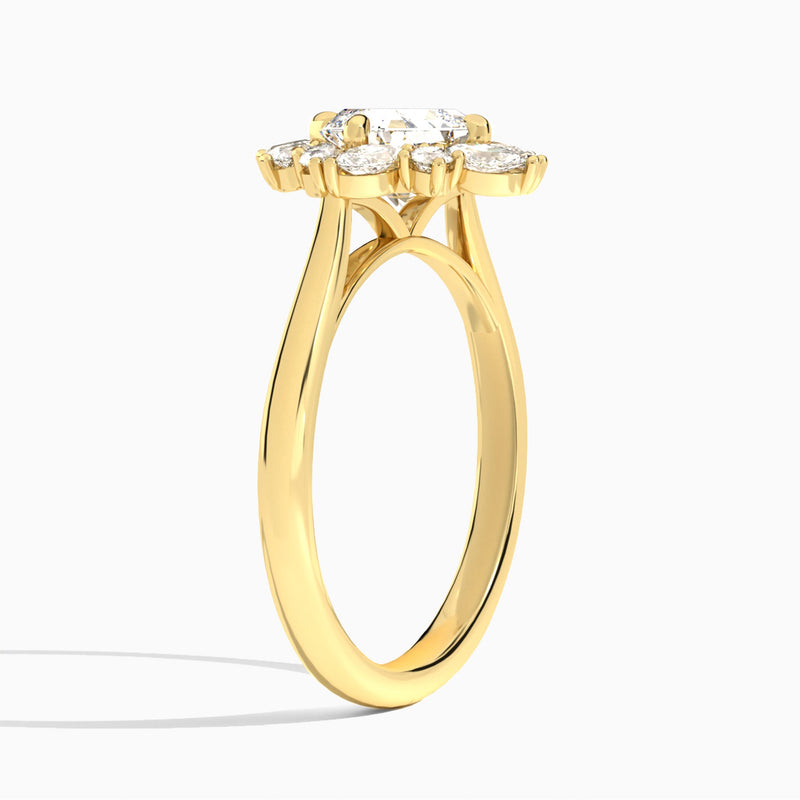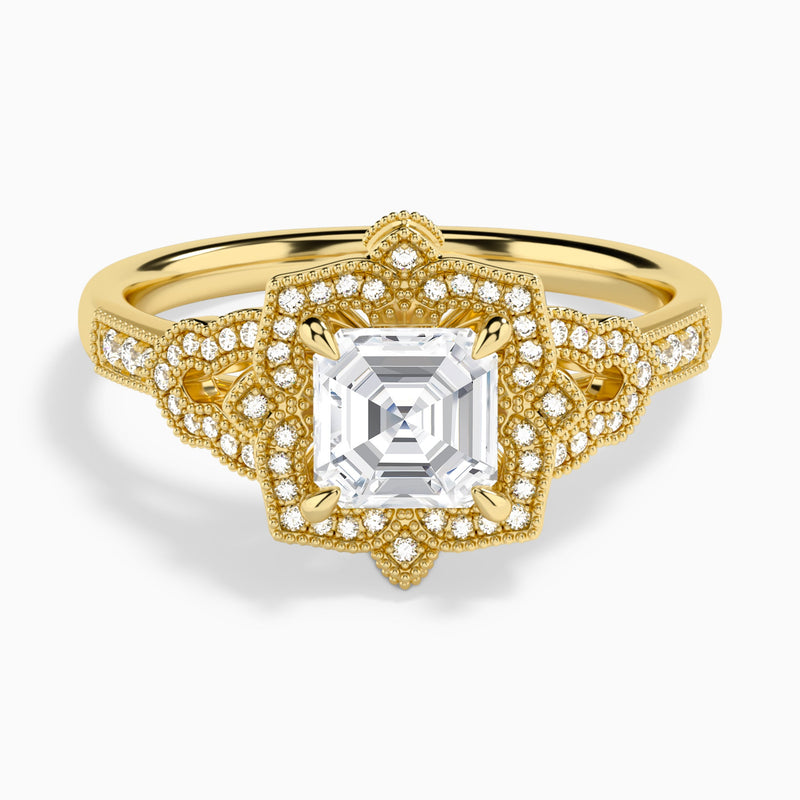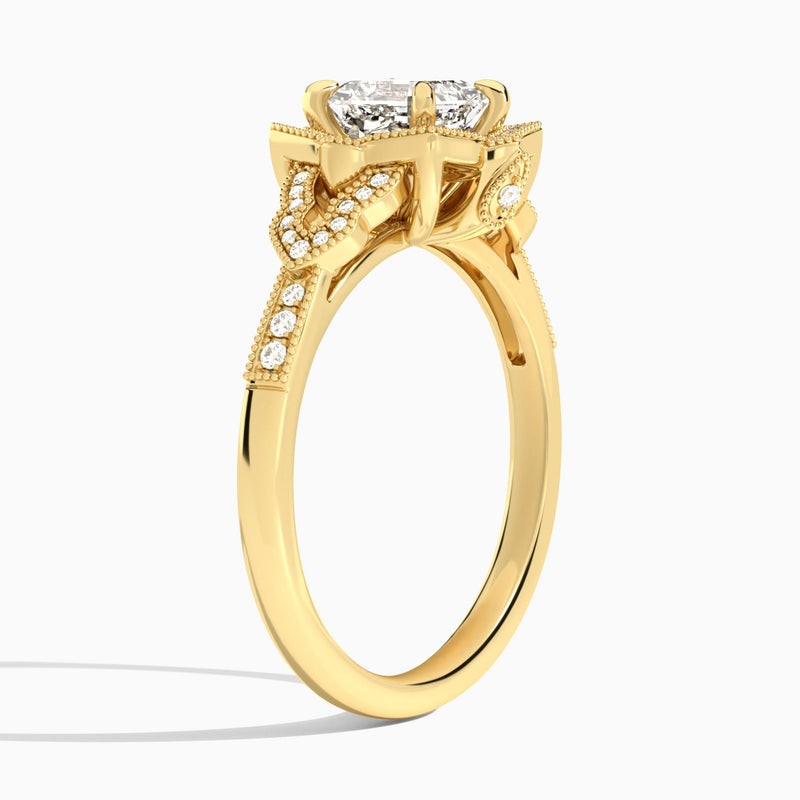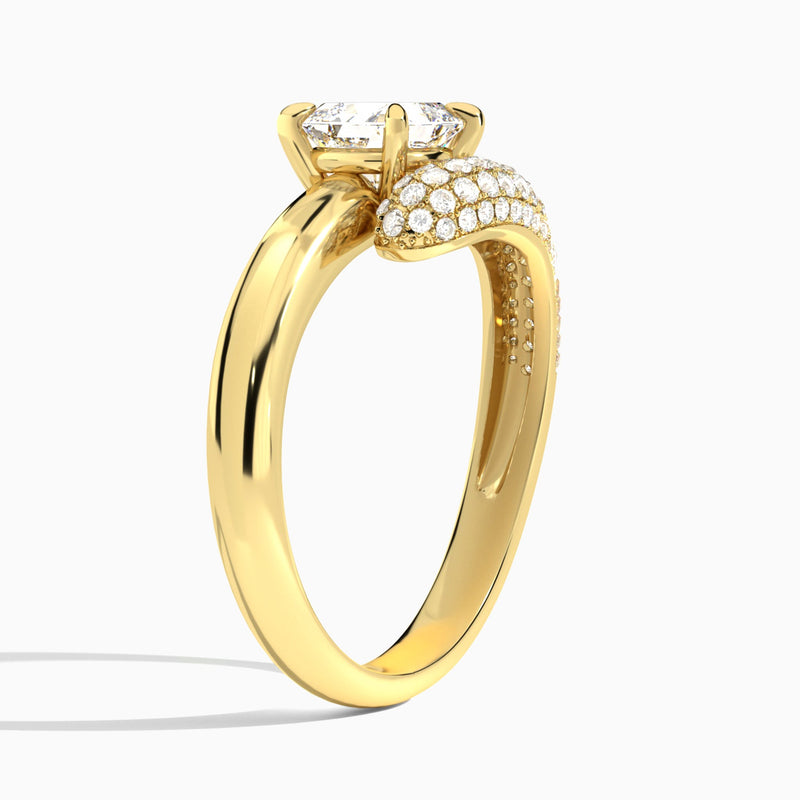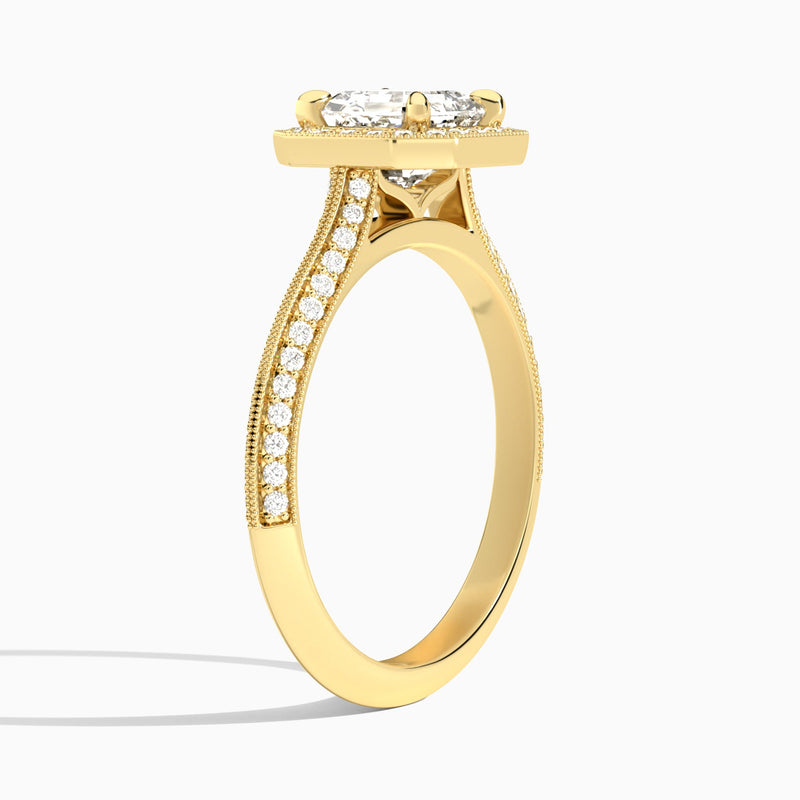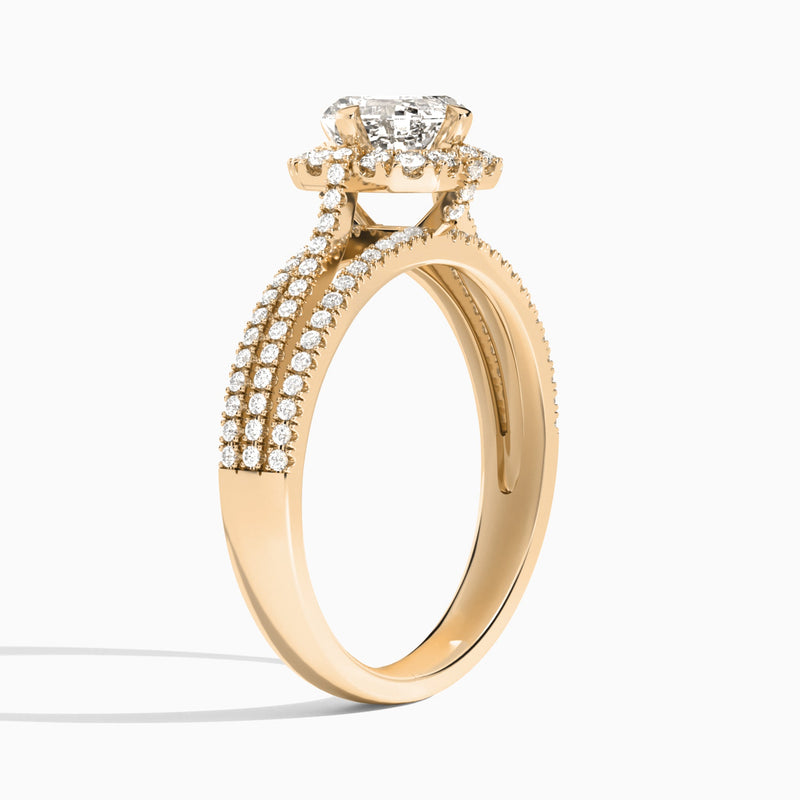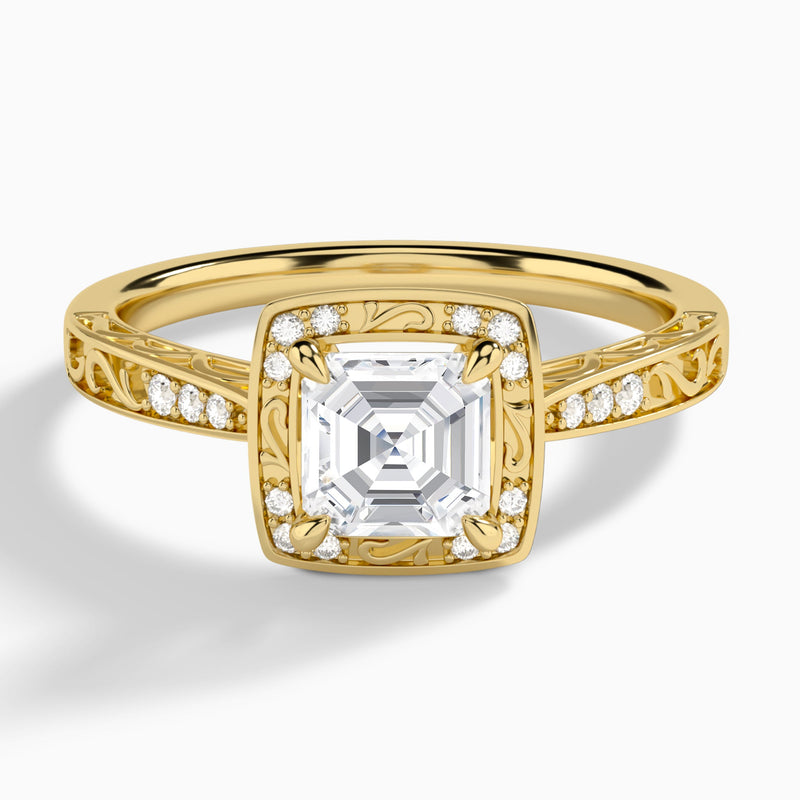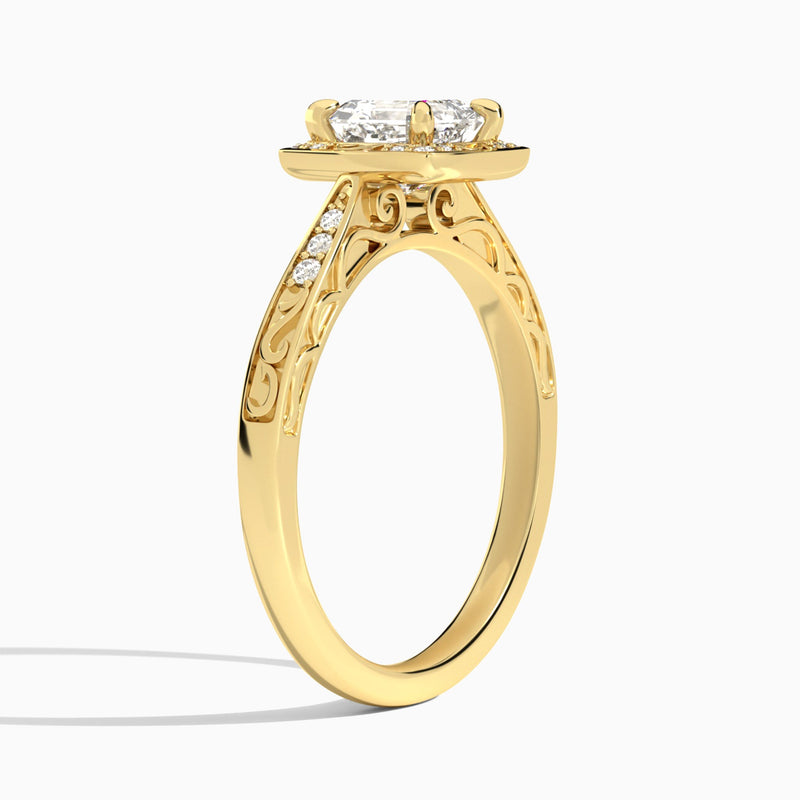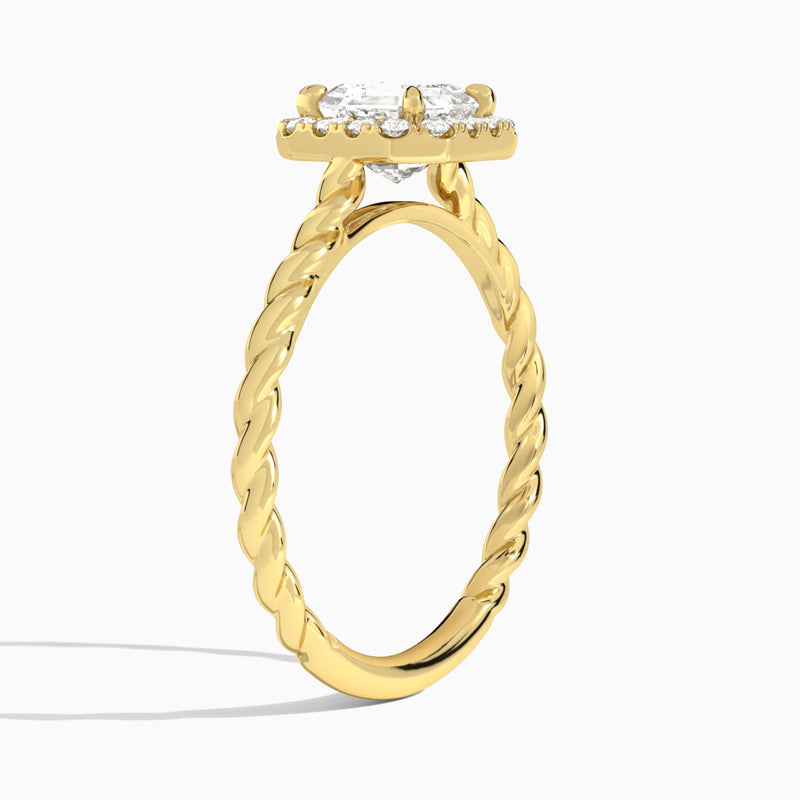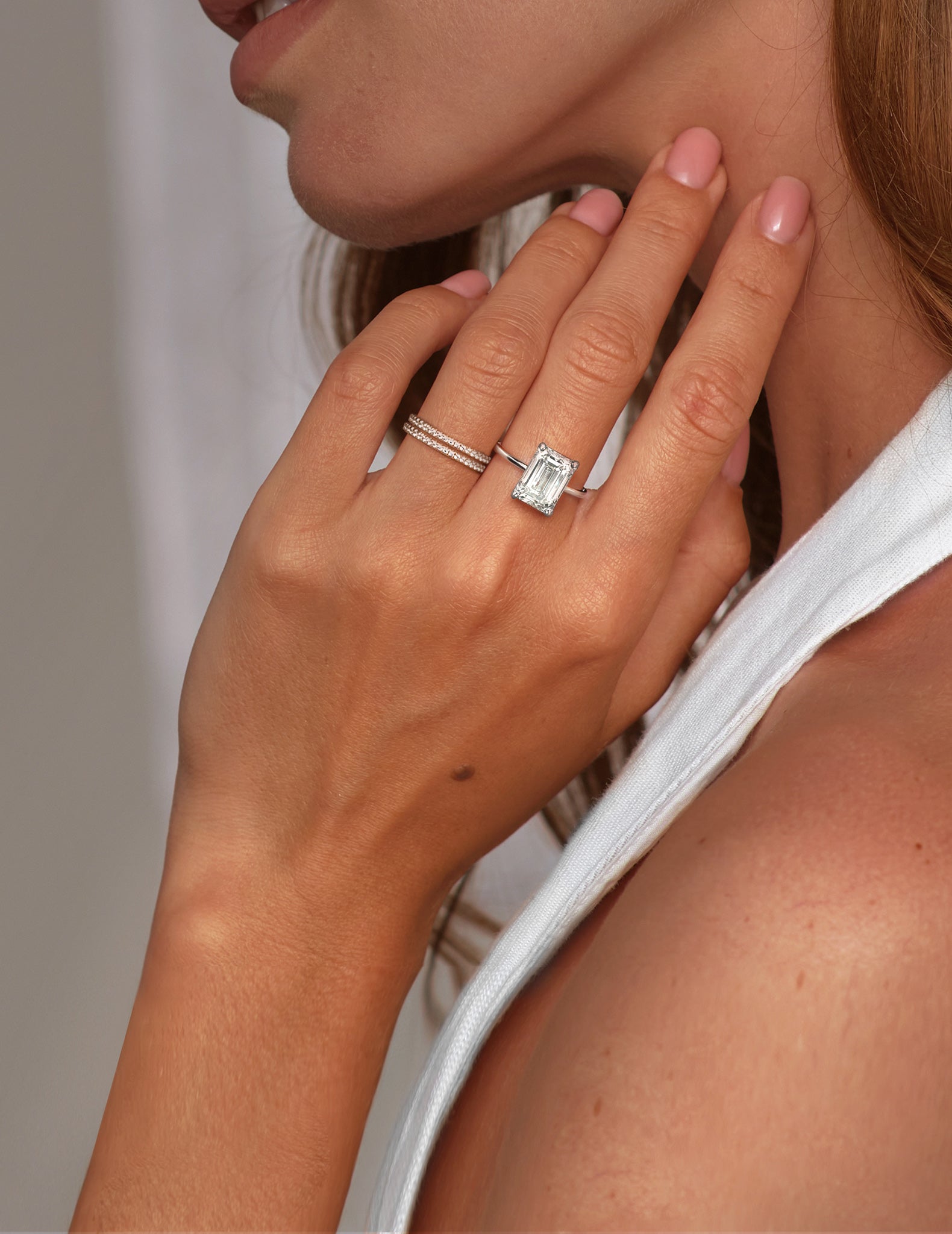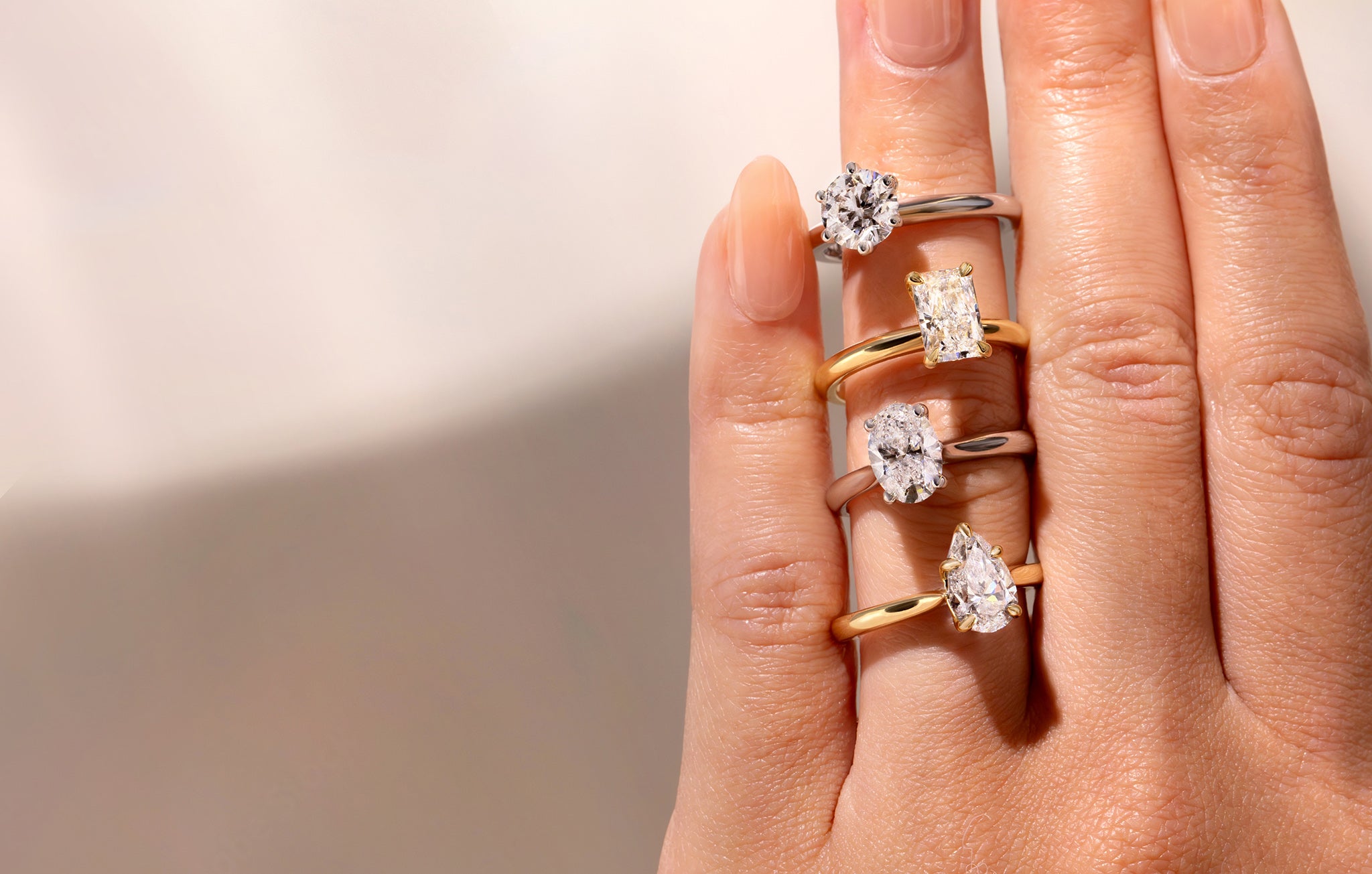If you are captivated by the allure of the Art Deco era, geometric precision, and a unique form of brilliance, the Asscher cut is an unparalleled choice. Combined with the ethical sourcing and exceptional quality of lab-grown diamonds, these rings offer a sophisticated statement of love that is both timeless and conscious.
What Are Asscher Diamond Engagement Rings?
The captivating characteristics of asscher-cut diamonds include a deep pavilion, a high crown, broad, parallel step-cut facets, and a usually square form with dramatically cut corners that create an octagonal outline. The Asscher cut is intended to attract the eye inward, producing an enthralling "hall of mirrors" appearance that highlights the diamond's clarity and shine in contrast to the fiery glitter of brilliant cuts. The Asscher family created this cut in 1902, and because of its subtle glitz and geometric accuracy, it became quite popular during the Art Deco period.
Why Choose an Engagement Ring with an Asscher Diamond?
- Unique Step-Cut Facets: Unlike brilliant cuts (e.g., round or princess), Asscher diamonds feature parallel step facets that create a mesmerizing "hall of mirrors" effect. This design emphasizes clarity and symmetry over sparkle, resulting in a refined, vintage aesthetic.
- Art Deco Heritage: The Asscher cut symbolizes sophistication and timeless love, making it ideal for couples seeking a ring with historical significance. It reached peak popularity during the Art Deco period (1920s-1930s) and remains synonymous with its bold geometry, glamour, and sophistication.
- Hypnotic Clarity: The step-cut facets act like windows into the diamond's heart. Instead of fragmented sparkle, they produce clear, linear flashes of light and showcase the stone's clarity and purity beautifully.
- Understated Sophistication: Asscher cuts appeal to those with a refined aesthetic who appreciate architectural beauty and elegance over intense sparkle. This decision demonstrates self-assurance and discriminating taste.
Key Distinctions Between Princess Cut and Asscher
Despite having a square shape, the Princess cut, also known as a dazzling cut, emphasizes flaming glitter with its many facets and sharp corners. The goal of the Asscher cut, a step cut, is to achieve a soft, mirror-like sheen and clarity. A more antiquated vibe is also produced by the Asscher's clipped corners and broader table (top facet).
- Corners: Asscher cuts have significantly cropped corners, creating an octagonal outline. Princess cuts have sharp, pointed 90-degree corners.
- Facet Style: Asscher uses step cuts (parallel lines). Princess uses brilliant-style facets (triangles/chevrons).
- Light Performance: Asscher showcases clarity and produces bold flashes ("hall of mirrors"). Princess maximizes sparkle and fire.
How to Choose Your Perfect Asscher Lab-Grown Diamond?
- Clarity is Paramount: Because step cuts have large, open facets, inclusions are much more visible than in brilliant cuts. Prioritize a higher clarity grade. VS1 or better is often recommended for Asscher cuts to ensure no distracting flaws are visible to the naked eye. An eye-clean VS2 might be acceptable, but requires careful inspection.
- Cut Quality And Symmetry: The "hall of mirrors" effect depends on accuracy. In Polish and Symmetry, aim for Excellent or Very Good ratings. A dull or uneven appearance may be the consequence of poor cutting.
- Ideal Length-to-Width Ratio: For a classic Asscher look, aim for a 1.00–1.05 ratio (a perfect square). Slightly rectangular ratios (1.10–1.15) offer a modern twist while retaining symmetry.
- Color: Compared to spectacular cuts, step cuts typically make body color more visible. If setting in platinum or white gold, take into account grades H or above (G or F for outstanding whiteness). Depending on personal inclination, warmer tones (I or J) may be appropriate in rose gold or yellow settings.
How to match Asscher Diamond Engagement Rings with Wedding Bands?
The straight sides of an Asscher-cut engagement ring often allow a wedding band to sit flush against it. Consider these options:
- Plain Metal Band: Simple and timeless, allowing the engagement ring to shine.
- Channel-Set Band: With small square (princess) or baguette diamonds for a cohesive geometric look.
- Eternity Band: Offers continuous sparkle that complements the Asscher's elegance.
An Asscher Lab Grown Diamond Engagement Ring is more than a ring; it's a piece of history, a work of art, and a symbol of sophisticated love. Choosing a lab-grown diamond adds a layer of modern responsibility to this timeless elegance. It signifies a commitment to beauty, quality, and ethical values.
Explore more engagement ring shapes:Round Diamond Engagement Rings | Oval Diamond Engagement Rings | Cushion Diamond Engagement Rings | Pear Diamond Engagement Rings | Princess Diamond Engagement Rings | Emerald Diamond Engagement Rings | Radiant Diamond Engagement Rings | Heart Diamond Engagement Rings












